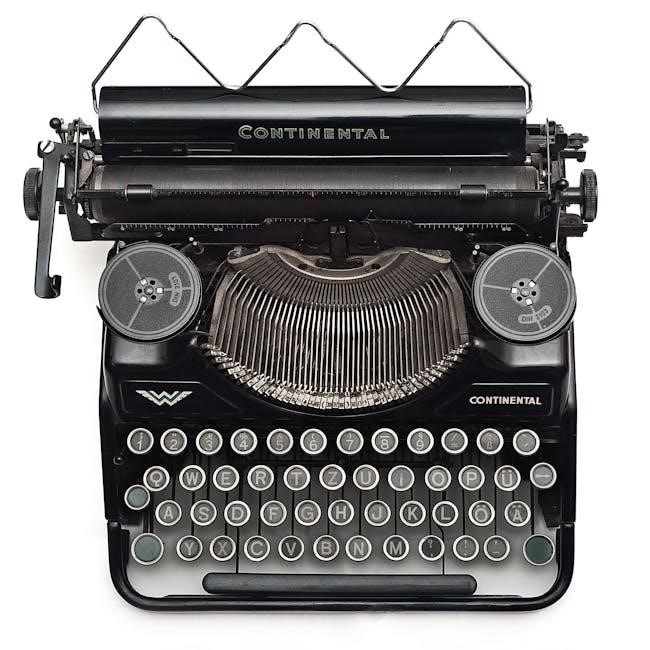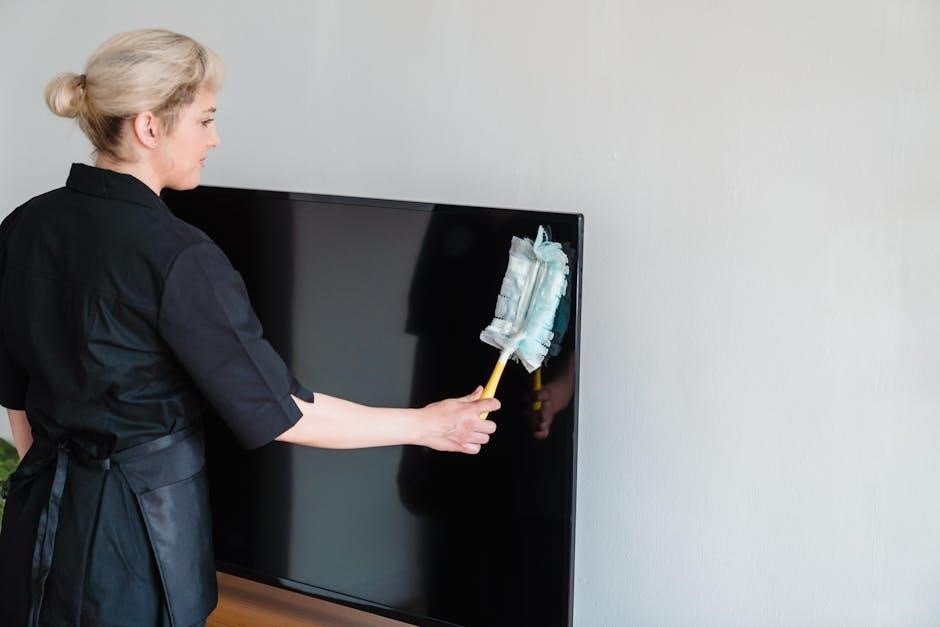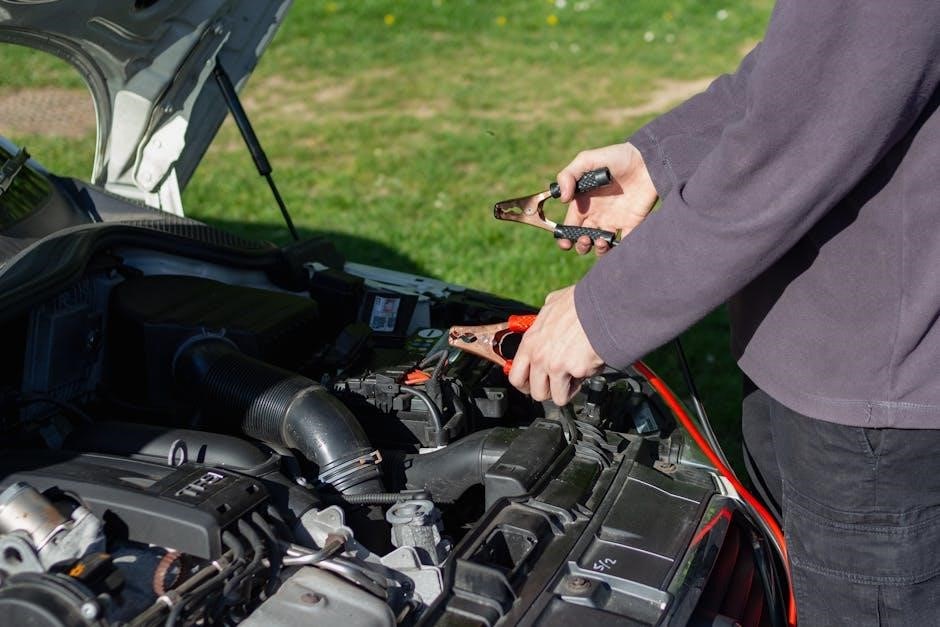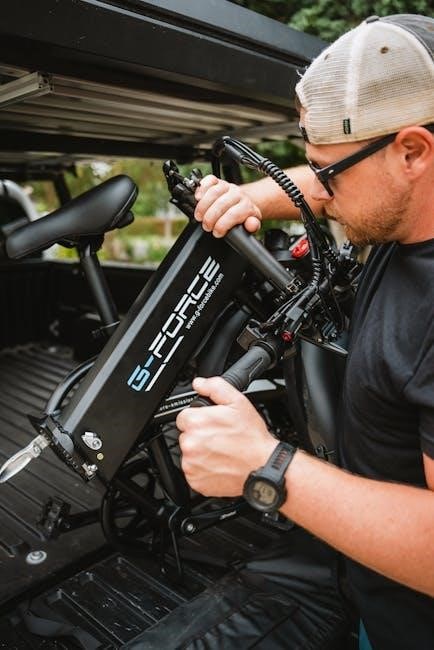The Missouri Driver’s Manual in Spanish is a vital resource for Spanish-speaking drivers, providing essential information on traffic laws, road signs, and safe driving practices in Missouri.
Overview of the Manual
The Missouri Driver’s Manual in Spanish is a comprehensive guide designed to help Spanish-speaking drivers understand the state’s traffic laws, road signs, and safe driving practices. Available in PDF and audio formats, it covers essential topics such as rules of the road, traffic signals, and licensing requirements. The manual is free to download and serves as a crucial resource for both new and experienced drivers, ensuring they are well-prepared for the driver’s exam and equipped to drive safely in Missouri.
Importance for Spanish-Speaking Drivers
The Missouri Driver’s Manual in Spanish is crucial for Spanish-speaking drivers, offering clear and accessible information on traffic laws, road signs, and safe driving techniques. By providing content in their native language, it ensures understanding and compliance with state regulations, reducing barriers to obtaining a driver’s license. This resource is vital for new residents and non-English speakers, promoting road safety and equality in accessing driving privileges in Missouri.
Key Sections of the Missouri Driver’s Manual
The manual includes essential sections on traffic signs, rules of the road, and safe driving practices, ensuring Spanish-speaking drivers understand Missouri’s driving regulations and safety guidelines.
Traffic Signs and Signals
The Missouri Driver’s Manual in Spanish provides a comprehensive overview of traffic signs and signals, ensuring drivers understand their meanings and importance. It covers various types of signs, including warning, regulatory, and construction signs, as well as traffic signals and pedestrian signals. Clear visual descriptions help drivers recognize and interpret signs quickly. Understanding these signs is crucial for safe driving and adhering to Missouri’s traffic laws; The manual emphasizes the importance of obeying signals to ensure roadway safety for all users.

Rules of the Road
The Missouri Driver’s Manual in Spanish outlines the essential rules of the road to ensure safe and lawful driving. It covers topics such as right-of-way laws, speed limits, and proper procedures at intersections. The manual also emphasizes the importance of adhering to traffic laws, including those related to seat belt use and driving under the influence. By understanding these rules, drivers can reduce the risk of accidents and contribute to a safer roadway environment for everyone in Missouri.
Safe Driving Practices
The Missouri Driver’s Manual in Spanish emphasizes safe driving practices to reduce accidents and promote responsible driving. It covers topics such as defensive driving techniques, maintaining a safe following distance, and handling adverse weather conditions. The manual also highlights the importance of using headlights appropriately, avoiding distractions while driving, and being aware of pedestrian and bicycle traffic. By following these guidelines, drivers can significantly lower the risk of accidents and contribute to a safer roadway environment in Missouri.

Obtaining the Manual
The Missouri Driver’s Manual in Spanish can be downloaded as a PDF or accessed in audio format from the Missouri Department of Revenue’s official website or YouTube channel.

Downloading the PDF Version
The Missouri Driver’s Manual in Spanish is available for free download as a PDF from the Missouri Department of Revenue’s official website. This version is convenient for offline study and includes all essential chapters, such as the table of contents, driver license information, and traffic rules. The PDF format ensures easy navigation and accessibility on any device. It is identical to the printed version, providing accurate and official information to prepare for the driver’s exam. Additionally, the manual covers key topics like road signs, driving laws, and safe practices, making it a comprehensive resource for Spanish-speaking drivers. The PDF can be downloaded directly from the Missouri DOR website or through trusted online platforms, ensuring quick and easy access. This feature is particularly useful for those who prefer self-paced learning or need to study without internet connectivity. The manual is also split into chapters, allowing users to focus on specific areas, such as traffic signals or license requirements, before taking the exam. Furthermore, the PDF version is regularly updated to reflect the latest driving laws and regulations in Missouri, ensuring that all information is current and relevant. By downloading the PDF, drivers can efficiently prepare for their exams and gain a thorough understanding of safe driving practices in Missouri. The availability of the manual in Spanish further ensures inclusivity, making it accessible to a broader audience. Overall, the PDF version of the Missouri Driver’s Manual in Spanish is a valuable tool for anyone seeking to obtain a driver’s license in the state. It is also complemented by an audio version available on the Missouri Department of Revenue’s YouTube channel, catering to different learning preferences. The combination of these resources provides a well-rounded approach to exam preparation and driving education. The manual’s clarity and organization make it an indispensable guide for both new and experienced drivers. By leveraging these resources, drivers can confidently navigate Missouri’s roads and adhere to all applicable traffic laws. The PDF version is a testament to Missouri’s commitment to providing equal access to driving education for all residents, regardless of their primary language. It serves as a critical step toward ensuring road safety and promoting responsible driving practices across the state.
Accessing the Audio Version
The Missouri Driver’s Manual in Spanish is also available as an audio version, accessible through the Missouri Department of Revenue’s official YouTube channel. This resource is designed to assist Spanish-speaking drivers in studying for the driver’s exam. The audio version covers the same essential topics as the written manual, including traffic signs, road rules, and safe driving practices. It is a convenient option for individuals who prefer auditory learning or need additional support. The audio guide is free and easily accessible, making it a valuable tool for exam preparation. It complements the PDF version and ensures that all drivers have the resources needed to succeed. The audio version is particularly helpful for those who may find reading the manual challenging or prefer to study on the go. It is regularly updated to reflect the latest driving laws and regulations, ensuring accuracy and relevance. By utilizing the audio version, drivers can gain a deeper understanding of the material and feel more confident when taking the exam. This resource underscores Missouri’s commitment to providing accessible and inclusive driver education for all residents. The audio version is a practical and effective way to prepare for the driver’s exam, offering flexibility and ease of use; It is an excellent supplement to the written manual, catering to different learning styles and preferences.

Preparing for the Driver’s Exam
The Missouri Driver’s Manual in Spanish is your primary study resource. Use practice tests, study materials, and review exam formats to ensure readiness for the driver’s exam.
Practice Tests and Study Materials
The Missouri Driver’s Manual in Spanish offers a variety of study tools, including 50 practice questions and interactive guides. These resources help drivers understand traffic laws, signs, and safe driving practices. The manual is complemented by online practice tests and audio versions available on YouTube. Additionally, structured PDF chapters and community support make studying easier. Use these materials to prepare effectively for the written and driving exams, ensuring a thorough understanding of Missouri’s driving regulations.
Understanding the Exam Format
The Missouri Driver’s Manual in Spanish helps drivers understand the exam format, which includes a written test and a driving skills test. The written exam covers traffic signs, road rules, and safe driving practices. It consists of 10 questions and requires a passing score of at least 80%. Applicants must also complete a vision test. The manual provides a clear outline of what to expect, ensuring drivers are well-prepared for both the written and practical exams.

Types of Driver’s Licenses in Missouri
Missouri offers three main driver’s licenses: Regular, Commercial (CDL), and Motorcycle, each tailored to different driving needs and requirements.
Regular Driver’s License
A Regular Driver’s License in Missouri allows individuals to operate non-commercial vehicles. It is available to residents aged 16 and older, with requirements including proof of identity, residency, and legal presence. Applicants must pass vision, written, and driving tests. The license is renewable every six years. Additional fees and documentation apply for underage drivers. This license is essential for everyday driving needs in Missouri.

Commercial Driver’s License (CDL)
A Commercial Driver’s License (CDL) is required for operating commercial vehicles in Missouri. It is divided into classes (A, B, C) based on vehicle weight and type. Applicants must meet specific eligibility criteria, including age, residency, and medical standards. Additional endorsements are needed for specialized cargo, such as hazardous materials or passengers. The CDL process involves written exams, skills tests, and background checks. It is essential for professional drivers to ensure public safety and comply with federal regulations. The manual provides detailed guidance for obtaining and maintaining a CDL.
Motorcycle License

A Motorcycle License in Missouri requires specific training and testing. The manual details requirements for obtaining a Class M license, including vision tests, written exams, and road skills assessments. It covers motorcycle-specific safety tips, such as handling hazards and maintaining safe distances. The Motorcycle Operator Manual is available in Spanish, ensuring accessibility for all riders. It emphasizes the importance of proper gear and defensive driving techniques to reduce accident risks. This section is tailored for motorcyclists seeking to legally and safely operate their vehicles in Missouri.
Legal Requirements and Updates
The Spanish Missouri Driver’s Manual highlights legal requirements, including proof of identity, residency, and legal presence. Recent updates ensure compliance with current state driving laws and regulations.
Documentation Needed for Application
Applicants must provide proof of identity, residency, and legal presence in the U.S. Documents such as a valid passport, birth certificate, Social Security card, and utility bills are required. These documents must be original or certified copies and up-to-date to ensure compliance with state regulations. Additional requirements may apply for non-citizens, such as a valid visa or green card. Ensuring all documents are in order is crucial for a smooth application process.

Recent Updates to the Manual
The Missouri Driver’s Manual in Spanish has been updated to reflect current traffic laws and regulations. Key changes include revised sections on legal presence requirements and underage possession of substances; The 2025 edition is now available in both PDF and audio formats, accessible on the Missouri Department of Revenue’s website and YouTube channel. These updates ensure Spanish-speaking drivers receive accurate and comprehensive information to prepare for their exams and drive safely in Missouri.
Additional Resources
The Missouri DOR offers online tools, PDF guides, and an audio version of the manual; Additional support is available through community resources and state assistance programs to aid Spanish-speaking drivers.
Online Tools and Guides
The Missouri DOR provides online tools and guides to help Spanish-speaking drivers prepare for their exams. These include practice tests, interactive guides, and AI assistant support for clarifying complex terms. The manual is available on the Missouri DOR website and YouTube channel, offering audio versions and chapter-by-chapter resources. These tools ensure drivers can study effectively and understand traffic laws, signs, and safe driving practices in a convenient and accessible format.
Community and State Support
The Missouri DOR collaborates with community organizations to support Spanish-speaking drivers, ensuring access to the manual and resources. Local libraries and community centers often provide free access to the Spanish driver’s manual and practice tests. Additionally, state-funded programs offer free training materials and workshops to help drivers understand traffic laws and prepare for exams. This community-focused approach ensures equal opportunities for all residents to obtain a driver’s license and drive safely in Missouri.
The Missouri Driver’s Manual in Spanish is a comprehensive guide that equips drivers with essential knowledge for safe and confident driving. Study diligently, practice regularly, and utilize available resources to ensure success on your driving journey in Missouri.
Final Tips for Success
Mastering the Missouri Driver’s Manual in Spanish requires consistent study and practice. Utilize online resources, such as practice tests, to reinforce your understanding of traffic laws and signs. Listen to the audio version for additional support. Focus on key areas like road safety and legal requirements. Stay calm during the exam, and don’t hesitate to seek clarification if needed. Regular review and practical application of the manual’s content will significantly improve your chances of success.







































